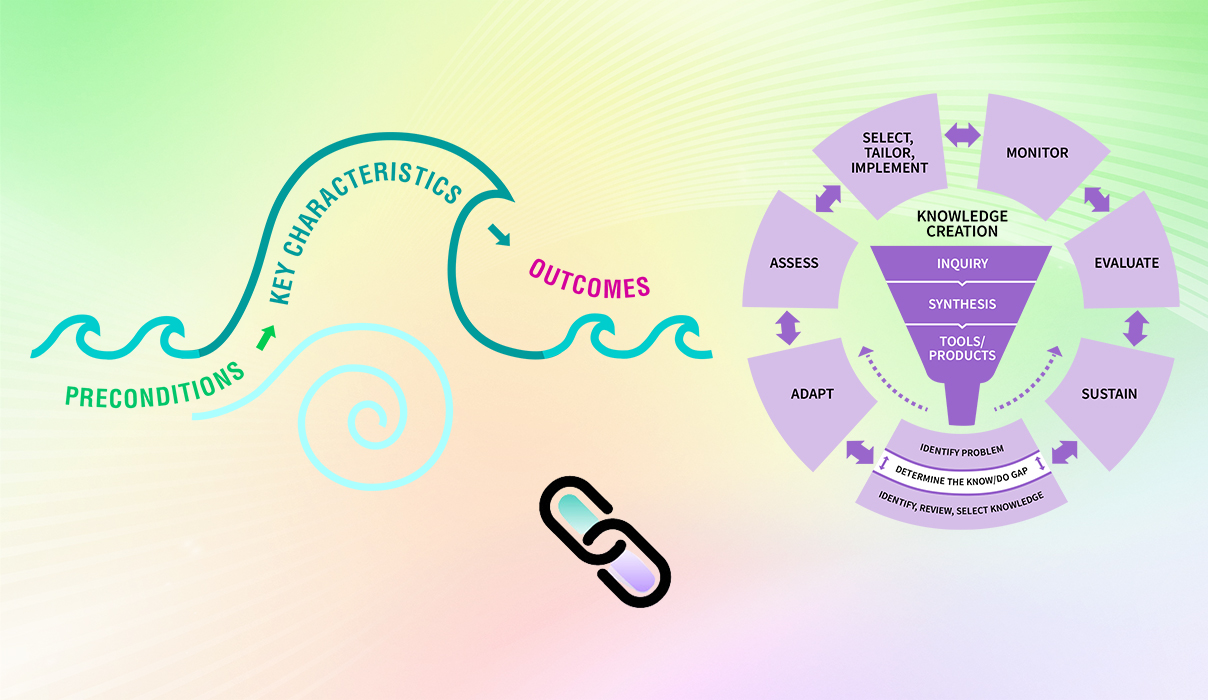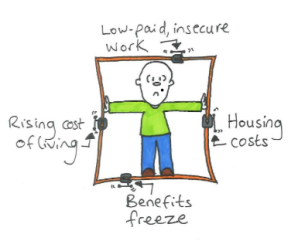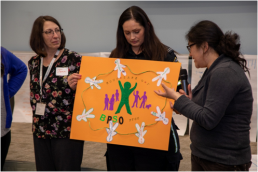Framing
- Framing
- 1 What is this element?
- 2 Why is this element important?
- 3 The six elements of effective framing
- 4 Examples of effective framing
- 5 Considerations for getting started
- 6 Implementation tools
- 7 Navigating common problems
- 8 Check your progress
- 9 Linking this element to other components in the toolkit
- 10 More resources
Index
- 1. What is this element?
- 2. Why is this element important?
- 3. The six elements of effective framing
- 4. Examples of effective framing
- 5. Considerations for getting started
- 6. Implementation tools
- 7. Navigating common problems
- 8. Check your progress
- 9. Linking this element to other components in the toolkit
- 10. More resources
In this section, you will learn about framing or positioning a shared concern or a strongly desired change in ways that are meaningful, persuasive and compelling. Framing is an essential skill for change agents – it can create and promote an understanding of the shared concern by others, fuel an urgent need for a response and fosters the motivation and energy for individual and collective action.

What is this element?
Framing is one of the 10 key characteristics of a social movement. It is closely linked to the other characteristics, including shared concern and collective identity.
Framing is about positioning or describing an issue in a way that makes people care about it, and motivates them to join the social movement and take action. Over time, a frame may lose meaning or not be as impactful as a social movement evolves. In these cases, reframing or repositioning an issue may be needed to maintain the level of engagement of change agents (Bibby et al., 2009, Grinspun et al., 2018).
When engaging in framing, you’ll need to decide which issues and goals to focus on and how to communicate them to other people (del Castillo et al., 2016; Grinspun et al., 2018).
You can use several strategies to frame an issue. Some examples are stories, words, slogans, pictures, humour, irony and performance.
SOURCES: Dementia Action Alliance, 2018; Serna Restrepo et al., 2018.
A framed message should be compelling, persuasive and dynamic.
Compelling
Persuasive
Dynamic
SOURCES: Alliance, 2018; Bate et al., 2004a; Bevan et al., 2011; Bibby et al., 2009; del Castillo et al., 2016; Herechuk et al., 2010; Tremblay et al., 2018.
Why is this element important?
Framing is compelling, persuasive and dynamic. It is used to gain support, draw people to the cause and mobilize them to act (Alliance, 2009).
Framing, when supported by evidence, positions the shared concern or strongly desired change as credible, with an urgent need for change and action (Bibby et al., 2009).
The six elements of effective framing
1. Context – The “what” and the “why"
Determine and define the shared concern or strongly desired change, underlying causes and efforts needed to address the issue. This work is integral to creating the frame – it helps introduce the shared concern or desired change and will influence how people respond.
2. Numbers and data
Use data to support the messaging – but use it sparingly. Keep the audience for your information in mind when you select the data you want to present – it must be meaningful to them. And, before laying out the numbers, present what they mean first.
Your goals in using data should be to point out:
- the scope of the problem
- risks associated with maintaining the status quo
- benefits of taking action
3. The messenger
Choose the person or people who will convey the message. Who you choose is as important as the message itself. The messenger or messengers should be knowledgeable, trustworthy and credible to their peers.
4. Visuals
Select images that are compelling and effective To convey your messages. They need to be a good “fit” and to illustrate the message in a broad context within a larger issue such as patient safety, quality improvement or person-centred care.
5. Metaphors and simple theories
Using metaphors, analogies or simple theories familiar to your audience can help support or extend understanding of the message. This can be especially valuable if the message includes new concepts, or existing concepts that are complex or abstract.
6. Tone
Be thoughtful about your tone. The message should be non-partisan. Avoid political or religious overtones unless those are related to your message. Otherwise, the message can be off-putting or perceived as “pushy", which can cause people to stop paying attention.
Use a tone that is welcoming and inclusive – not divisive – to achieve the goal of a collaborative, coordinated response.
SOURCE: Adapted from Frameworks Institute. Framing Public Issues. 2005. Retrieved from frameworksinstitute.org/publication/framing-public-issues
Accelerate Your Success: The Knowledge-to-Action Framework’s "Evaluate outcomes" action cycle phase focuses on the use of data to determine the outcomes and impact of implementation. The data includes measures of clinical and service outcomes at the micro (patient/person and provider), meso (organization-wise) and macro (systemic) levels. For change agents, being knowledgeable about the data available and how it has been analyzed can be helpful to support framing messages.
Examples of effective framing
Example #1 - Using doodles to frame an issue
Example #2 - Engaging Champions' narratives
Example #3 - Using images and messages for campaigns
Example #4 - Sharing compelling stories to frame values
Tell us how you and your change team have used framing at #LeadingChangeToolkit
Considerations for getting started
Applying the six key elements
Here are some goals and questions to consider when developing your frame using the key framing elements.
Context: The "what" and the "why"
Numbers and data
The messenger
Visuals
Metaphors and simple theories
Tone
SOURCE: Adapted from Frameworks Institute. Framing Public Issues. 2005. Retrieved from Framing Public Issues | FrameWorks Institute
Use storytelling and narratives to build meaning for a frame
Brainstorming and "dot voting" are two approaches you can use to help clarify and prioritize goals.
In dot voting, each person is given dots (for example, stickers or markers) to vote for or rank preferred choices. "Dotmocracy" allows for equal participation in priority decision-making. For more details, see the Ontario government's webpage on dot voting.
Implementation tools
View our resource page "Framing do's and don'ts"
View or download our worksheet "Applying the six elements of framing"
View or download our checklist on framing "Framing checklist"
Navigating common problems
Here are some common problems you and your change team may experience when using framing, and some suggested strategies to address them.
The frame doesn’t align with the target audience’s values and beliefs
- Identify the target audience or audiences clearly, then develop alternative messaging developed to make sure your messaging aligns with the prioritized values and needs of each audience.
- Trial or pilot the frame and get feedback on whether it resonates with hearts and minds. If it doesn't, rethink the message and/or the messenger.
The scope of the frame is too broad or too narrow
- Align the frame with the shared concern or the desired change, using tips and techniques from the “six elements” discussed above.
- Use more than one frame in cases of complex shared concerns, where needed.
The frame is used multiple times, so people don’t notice it, or they get tired of it
- Be creative with framing to spark attention and interest.
- Consider the other elements of framing to support the narrative including tone, images and data.
The frame is out of touch or contradicted by current events, or it may not align with the current stage of the social movement
- Pilot or trial the frame to make sure it has meaning for the target audience.
- Make sure you incorporate current examples.
- Be willing to reframe or reposition the messaging of the social movement as it evolves and develops to make sure it stays current and relevant.
SOURCES: Bevan et al., 2011; Bibby et al., 2009; Dementia Action Alliance, 2009.
Check your progress
Use the checklist below to evaluate your change team's progress with framing or reframing an issue.
- Context - The "what" and the "why"
- Is the frame written in plain language?
- Does it identify what the need for change is about?
- Does it indicate the values that align with the change (for example, responsibility, or respect?)
- Are the underlying values reinforced by accompanying words, images and/or metaphors?
- Does the frame indicate that solutions exist? Do solutions outlined address the shared concern or desired change?
- Does it inspire optimism and a belief in agency – that is, the power and courage of people to effect change?
- Does it clearly describe the shared concern or desired change, its causes, and who is responsible for addressing the concern?
- Does it highlight the urgency to take action? Does it make clear the risks if no action is taken?
- Does the frame explain the history and context of the shared concern?
- Is it oriented to the audience and their priorities?
- Does it clearly indicate how people can get involved or where they can get more information?
- Tone
- Is the message shared in an impartial, non-partisan way?
- Does it avoid inflammatory attacks?
- Visuals
- Do the visuals support the message?
- Are the visuals organized in a way to support and further understanding?
- Numbers
- Are numbers used sparingly - only to support the narrative of the message?
- Are they explained first before presenting them so that you can explain their meaning?
- The messenger
- Are the messengers you have used credible and trustworthy?
- Reframing
- When reframing, are all of the elements of a frame used – that is, the context, numbers, messenger, visuals, metaphors and tone?
SOURCE: Adapted from Frameworks Institute. Framing Public Issues. 2005. Retrieved from Framing Public Issues | FrameWorks Institute
Linking this element to other components in the toolkit

Linking this key characteristic to the other elements of the Social Movement Action Framework:
Each of the elements of the Social Movement Action (SMA) Framework is dynamic and interrelated. For example, strategic framing – or reframing –situate a shared concern or desired change, an urgent need for action, underlying causes and solutions. You can use framing to engage people’s hearts and minds and build intrinsic motivation, increase public visibility and shape individual and collective action.
Linking this key characteristic to the action cycle phases of the Knowledge-to-Action Framework:
You and your change team’s capacity in social movement actions may be enhanced or accelerated by adding in some of the action cycle phases of the Knowledge-to-Action (KTA) Framework, as the two frameworks are complementary. In addition to the linking example described earlier in this section, there can be many other points of connection between the two frameworks. Here are two examples for you to consider:
- Identify the problem: Clearly identifying the problem using the KTA Framework can help you and your change team augment the narrative or message regarding the shared concern or desired change you are trying to tell. Identifying the problem, shared concern or desired change helps anchor your narrative. You can then connect this problem and its solution to the shared values and interests of your stakeholders, and make clear why change must happen.
- Adapt knowledge to local context: Assessing the local context, individuals and/or groups and resources can inform a narrative that can strategically communicate and position the shared concern or desired change and the compelling need for change. You and your change team can use the results of your assessment to tailor the message that would resonate with the local context. For example, you might choose to frame the same message, but adapt the communication style and the narratives you use to different settings and individuals if needed.
- Assess barriers and facilitators to knowledge use: In your message or narrative, you and your change team may also want to keep in mind some of the opportunities (or facilitators) and limitations (or barriers) that will ultimately determine the fate of your social movement. By being alive to these factors, you can leverage these opportunities to circumvent or minimize barriers. Remember, framing is a dynamic process that requires you to:
- position your issue
- build credibility and commitment to the movement’s purpose
- draw attention to concepts
- promote shared consciousness and support among your stakeholders.
For more discussion about the dynamic links between the elements of the SMA Framework to one another and to the KTA Framework, see the section "Two complementary frameworks".






